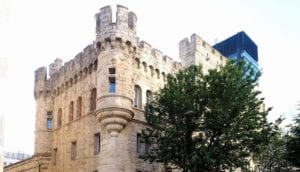For the second installment of our monthly series, “Jobs in the Art World,” we interviewed Luca Bonetti, who has been working as an art conservator for nearly half a century. From contemporary paintings by Mark Bradford to older pieces by Joan Miró, Bonetti and his team have collectively worked on thousands of paintings over the years. Conservation is one of the most under-appreciated areas of the visual arts industry, so read on to find out more about this fascinating field from one of the best in the business.
AZ: How long have you been an art conservator?
LB: I have been in conservation for about 50 years. I began my apprenticeship in Zürich at the Swiss National Museum in 1967.
AZ: Walk us through a typical day for you.
LB: My workday begins at 8:30am-9am. In the wintertime, I fill the humidifier then I check my emails and anything that wasn’t done the day before to help map out my day. The assistants arrive and together we discuss priorities and plan for the week or weeks ahead. When needed we discuss important details of a challenging aspect regarding a specific conservation.I speak with clients or potential clients to help assess their needs. Often times they request that we examine the work of art on location and provide a condition report/treatment proposal/estimate. Approximately 40% of our work is done on location because many paintings are very large or are murals.
We rarely skip lunch, as it is important to take a break and nourish our bodies and minds.
AZ: How did you get into conservation and restoration?
LB: I was immersed into conservation at the young age of 17. The art school I was attending required a summer internship, which I spent assisting a sign painter. For the next two internships, I was fortunate enough to work with a sculpture restorer who was a friend of my parents, mostly cleaning brushes, sharpening scalpels and observing.
AZ: What’s your favorite tool to work with?
LB: My favorite tools are canvas stretching pliers. I have about a dozen of them. I really enjoy stretching large paintings. Last winter I prepared a stretcher to install two paintings by Mark Bradford that are 22 x 22 feet. The paintings can be seen in the lobby of 1221 Avenue of the Americas at Rockefeller Center. I also like micro tools like spatulas, scissors etc. At times I custom make or modify tools for which we have an immediate need. I have a paintbrush that I purchased in 1968 and it’s as springy as the first day.
AZ: Most difficult project you’ve worked on?
LB: I would have to say the conservation of 3 large paintings by Miró that had been saturated in the past with an adhesive that was very sensitive to changes in humidity, which in turn made the canvas react by distending when absorbing humidity and contracting when drying. All previous attempts at treating the painting were unsuccessful. My team joined forces with a colleague from Rome who has developed a spring loaded stretcher onto which the canvases are mounted and kept in constant tension without using any fasteners. It was very laborious, but ultimately extremely rewarding.
AZ: Favorite exhibition from 2016?
LB: I really enjoyed the Frank Stella retrospective at the new Whitney Museum as well as the Carmen Herrera show, which was at the Whitney as well.
AZ: Favorite museum in the world?
LB: My all time favorite museum is the Uffizi in Florence, which is considered to be the first museum ever. Amongst the heavyweight museums, I like the Met and the Louvre. Of the smaller museums I always enjoy the Frick collection because of its relaxing environment and very special collection.
AZ: How many paintings do you think you’ve conserved over your career?
LB: I have conserved over 2,000 paintings, but keep in mind that most have been collaborative team efforts.
AZ: What advice do you have for someone who wants to work in art conservation?
LB: I will say that art conservation is a beautiful profession. It’s like being an art doctor. In my opinion, it is a career best suited for people who are curious and patient as well as have an interest in the preservation of historical artifacts (all artifacts are unique and worth preserving). Helpful attributes are precision and dexterity as well as an inquisitive mind. Broad knowledge of art history, art materials, chemistry and mechanics is a definite plus.
AZ: What qualities are you looking for in a new hire?
LB: It is difficult to work in art conservation without proper schooling and training. For more information about the profession please look online at the AIC (American Institute for Conservation). The art conservation schools in the US are Buffalo State College, NYU – Institute of Fine Arts, and University of Delaware – Winterthur.
AZ: Are you hiring?
LB: At the moment we are not looking to hire, but if I were to hire someone new I would probably ask colleagues for a word of mouth referral.
AZ: How can we keep in touch with you?
LB: By e-mail, lucabonetti@gmail.com.



